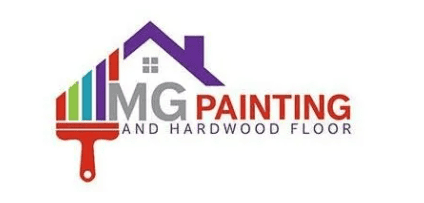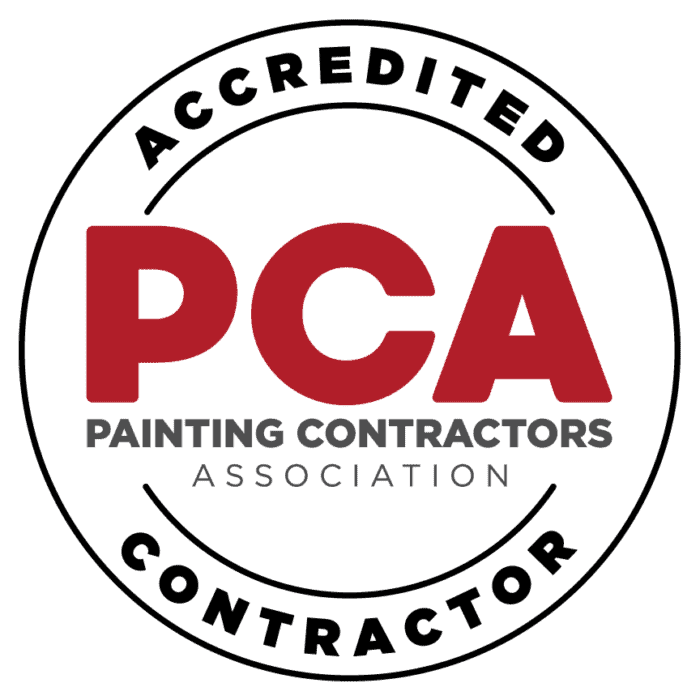Drywall, also known as gypsum board or plasterboard, is one of the most essential components in modern construction. It is an extremely popular material for creating interior walls and ceilings in residential and commercial buildings.
Understanding the basics of drywall and how it works is crucial for homeowners, contractors, and DIY enthusiasts alike. The combination of strength and flexibility makes drywall the go-to choice for interior walls and ceilings in various structures.
In this guide, we’ll explore the ins and outs of drywall, from its various types and composition to the nitty-gritty of drywall repair.
Discover how this versatile material can enhance your living space and learn how to address common issues that may arise.
Types of Drywall and Their Uses
Not all drywall is created equal. While they may look similar on the surface, different types of drywall are engineered to serve specific purposes—whether it’s moisture resistance, fire protection, or soundproofing. Choosing the right drywall for your project can make a significant difference in durability, performance, and overall comfort. Let’s explore the most common types and where they’re best suited.
1. Standard Drywall (Whiteboard)
This is the go-to drywall for most interior walls and ceilings. It’s the most affordable and widely available option, making it a staple in homes, offices, and retail spaces. Typically, standard drywall comes in thicknesses of 1/2-inch and 5/8-inch, with a white finish on one side for painting or wallpapering. If you’re doing a basic wall or ceiling installation, this is likely what you need.
2. Moisture-Resistant Drywall (Green Board)
Think of this as the slightly upgraded version of standard drywall, designed to withstand humid environments. The surface is treated with a water-resistant coating, making it a great choice for areas like kitchens, basements, and bathrooms. However, it’s important to note that moisture-resistant drywall is not waterproof. It shouldn’t be used inside a shower or anywhere with direct water exposure unless covered with a proper waterproof membrane.
3. Mold-Resistant Drywall (Purple Board)
Mold thrives in damp conditions, and this is where purple board steps in. Unlike green board, which only resists moisture, this drywall also contains special additives to prevent mold and mildew growth. It’s an excellent choice for bathrooms, laundry rooms, or any space with high humidity levels.
4. Fire-Resistant Drywall (Type X and Type C)
Safety is a priority, especially in high-risk areas. Fire-resistant drywall, often required by building codes, is reinforced with non-combustible fibers to slow down fire spread. Type X drywall is commonly used in garages, shared apartment walls, and commercial buildings. Type C is an upgraded version that offers even better fire protection. These panels buy valuable time in the event of a fire, giving occupants more time to evacuate and first responders a better chance to contain the flames.
5. Soundproof Drywall
Ever wished your home office or bedroom could be a little quieter? Soundproof drywall is designed to reduce noise transmission between rooms. It’s made with extra layers of gypsum and sometimes viscoelastic polymers that absorb sound vibrations. This type is perfect for music studios, home theaters, offices, and apartment buildings where privacy is key.
6. Eco-Friendly Drywall
Sustainability is becoming a bigger focus in construction, and eco-friendly drywall is a step in the right direction. Brands like Eco Rock and EnviroBoard use recycled materials and low-emission manufacturing processes. If you’re looking for a green building solution, this drywall helps reduce your environmental impact while maintaining the same durability as standard options.
7. Paperless Drywall
Unlike traditional drywall, which has a paper surface, paperless drywall is covered in fiberglass. This makes it more resistant to moisture, mold, and mildew. It’s commonly used in high-humidity environments or areas prone to water exposure, like basements and utility rooms. The only downside? It has a rougher texture, so finishing and painting require a bit more effort.
8. Plasterboard (Blue Board)
If you love the smooth, high-end look of plaster walls, blue board is your best bet. It’s specifically designed for veneer plaster applications, making it an ideal base for a strong, seamless finish. However, unlike green and purple boards, blue board is not moisture-resistant, so it shouldn’t be used in damp areas.
9. Damage-Resistant Drywall
High-traffic areas like hallways, garages, and kids’ playrooms often take a beating. Damage-resistant drywall is reinforced to withstand impacts, making it less prone to dents, cracks, and holes. If you need durability, especially in commercial or institutional settings, this type will stand the test of time.
10. Flexible Drywall
For those stunning curved walls and custom architectural features, standard drywall just won’t cut it. Flexible drywall is designed to bend and conform to rounded surfaces without cracking. It’s commonly used in decorative ceilings, archways, and creative interior designs where straight edges just won’t do.
11. Lightweight Drywall
Easier to handle, install, and transport—lightweight drywall is exactly what it sounds like. It weighs up to 25% less than standard drywall, which is a huge advantage when working on ceilings or large projects. This type reduces strain on workers and minimizes the load on wall structures without compromising durability.
12. Foil-Backed Drywall
Looking to improve insulation? Foil-backed drywall features a layer of aluminum foil on the back, which helps regulate temperature and prevent moisture absorption. It’s often used in cold climates or areas where additional insulation is needed, such as attics and exterior-facing walls.
13. VOC-Absorbing Drywall
Indoor air quality matters and this specialty drywall takes it to the next level. It’s designed to absorb and neutralize volatile organic compounds (VOCs) commonly found in household paints, cleaning products, and adhesives. Over time, it improves the air you breathe by reducing harmful chemical exposure. If you’re sensitive to allergens or concerned about indoor pollutants, this is an innovative option to consider.
Composition of Drywall: What’s Inside?
At first glance, drywall might seem like a simple, flat panel—but there’s more to it than meets the eye. Its composition is carefully designed to provide strength, durability, and resistance to various elements like fire, moisture, and impact. Whether you’re working on a home renovation or a commercial build, understanding what goes into drywall can help you choose the right type for your project.
Drywall is made up of three primary components, each playing a crucial role in its performance:
1. Gypsum Core: The Heart of Drywall
At the center of every drywall panel is its core—made primarily of gypsum, a naturally occurring mineral composed of calcium sulfate dihydrate. This mineral is what gives drywall its strength and rigidity, allowing it to form solid walls and ceilings without being overly heavy.
One of gypsum’s most important properties is its fire resistance. Because it contains water molecules in its chemical structure, gypsum helps slow the spread of flames in a fire. When exposed to high temperatures, the water inside the gypsum evaporates as steam, absorbing heat and delaying combustion. This is why many types of drywall, especially fire-rated versions like Type X and Type C, are commonly used in areas where fire safety is a priority, such as garages, commercial buildings, and shared walls in multi-family housing.
Beyond its fire-resistant qualities, gypsum also helps regulate indoor humidity. It can absorb excess moisture in damp conditions and release it when the air becomes dry, helping to maintain a more balanced indoor environment.
2. Paper Facing: The Outer Shell
Drywall may be tough on the inside, but it still needs a protective outer layer—this is where the paper facing comes in. Each drywall panel has two paper layers:
- The front layer (usually white or light-colored) is designed to be smooth and ready for finishing. It provides an even surface for painting, wallpapering, or texturing.
- The back layer (usually a darker brown or gray) reinforces the drywall panel and helps with stability during installation.
This paper layer isn’t just there for aesthetics—it also plays a role in fire resistance and structural integrity. However, traditional paper-faced drywall is more vulnerable to moisture and mold. That’s why in high-humidity areas like bathrooms and basements, paperless drywall (which replaces paper with fiberglass) is often the better choice.
3. Additives and Binders: Boosting Performance
To enhance drywall’s performance, manufacturers incorporate various additives and binders into the gypsum core. These materials improve specific properties, making drywall more resistant to fire, moisture, sound, or impact. Some common additives include:
- Fiberglass: Increases fire resistance and strengthens the drywall core, commonly found in fire-rated Type X drywall.
- Vermiculite and Perlite: Lightweight minerals that improve fire resistance and insulation.
- Silicone and Water-Repellent Agents: Used in moisture-resistant drywall (like Green Board) to help prevent water absorption.
- Viscoelastic Polymers: Found in soundproof drywall, these materials reduce vibrations and help absorb noise.
- Foil Backing: Some drywall types come with a foil layer on the back to enhance thermal insulation, making them useful in colder climates.
Each additive serves a purpose, ensuring that drywall can meet different structural and environmental demands. Whether you need a wall that can withstand heavy traffic, resist mold, or improve acoustics, there’s a drywall formulation designed for the job.
Common Issues with Drywall
Drywall is durable, but it is susceptible to common problems requiring repair:
- Cracks: Caused by settling, temperature changes, or poor installation. Small cracks can be repaired with joint compound and tape, while larger cracks may need professional attention.
- Water Damage: Results from leaks or excessive moisture. Prompt repairs prevent further deterioration and mold growth.
- Nail Pops: Screws or nails push through the surface, creating bumps or cracks. Fix by securing the area and applying a joint compound.
- Holes and Dents: Accidental damage can be repaired using spackling compounds or patches for larger holes.
Signs You Need Drywall Repair
Knowing when to seek drywall repair prevents further damage and maintains interior aesthetics:
- Visible Cracks or Gaps: If cracks or gaps are increasing, it’s time for repairs.
- Discoloration or Stains: Water damage or mold growth should be addressed immediately.
- Soft or Sagging Areas: Indicates possible water damage or structural issues.
- Peeling or Bubbling Paint: A sign of moisture intrusion or other problems.
Essential Tips for Drywall Repair and Maintenance
- Gather Tools: Utility knife, sandpaper, joint compound, putty knife, drywall tape, and a trowel.
- Prepare the Area: Clean the damaged section, remove debris, and ensure a smooth surface.
- Use Proper Repair Techniques: Apply joint compound for cracks or holes, and use patches for larger areas.
- Sand for a Smooth Finish: Sand the repaired area before painting.
- Perform Regular Maintenance: Inspect walls periodically to catch potential problems early.
Conclusion
Understanding drywall is crucial for maintaining and enhancing your living spaces. By familiarizing yourself with the different types of drywall, its composition, and common issues requiring repair, you can make informed decisions and address concerns effectively.
Drywall plays a pivotal role in modern interior design. However, it is not immune to problems. Cracks, water damage, nail pops, and holes are common issues that should be addressed promptly to preserve the integrity and aesthetics of your walls and ceilings.
Follow essential drywall repair and maintenance tips to keep your walls and ceilings in top-notch condition. Regular inspections and timely interventions prevent further damage and save you from costly repairs.




